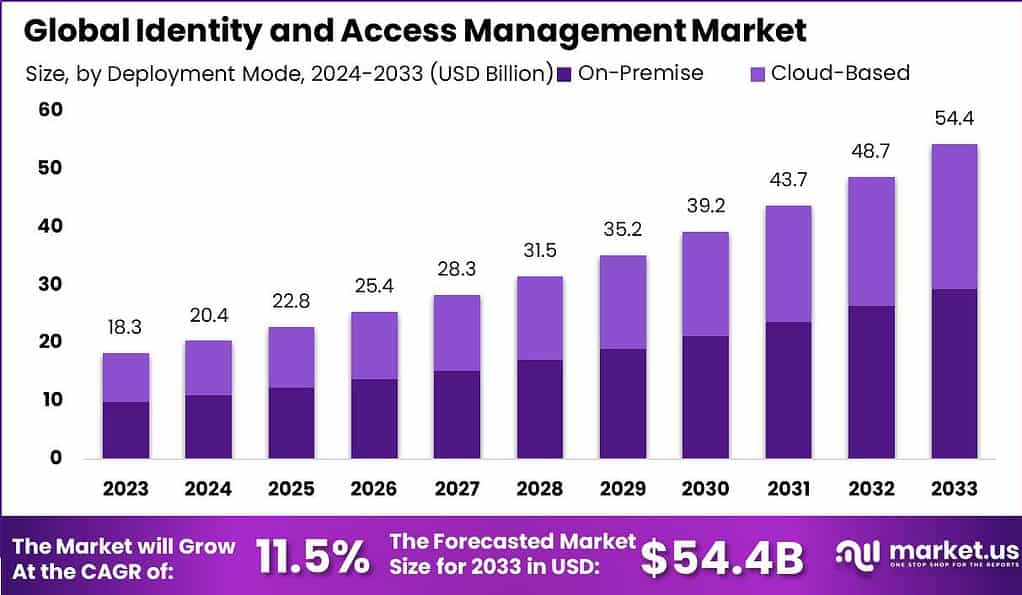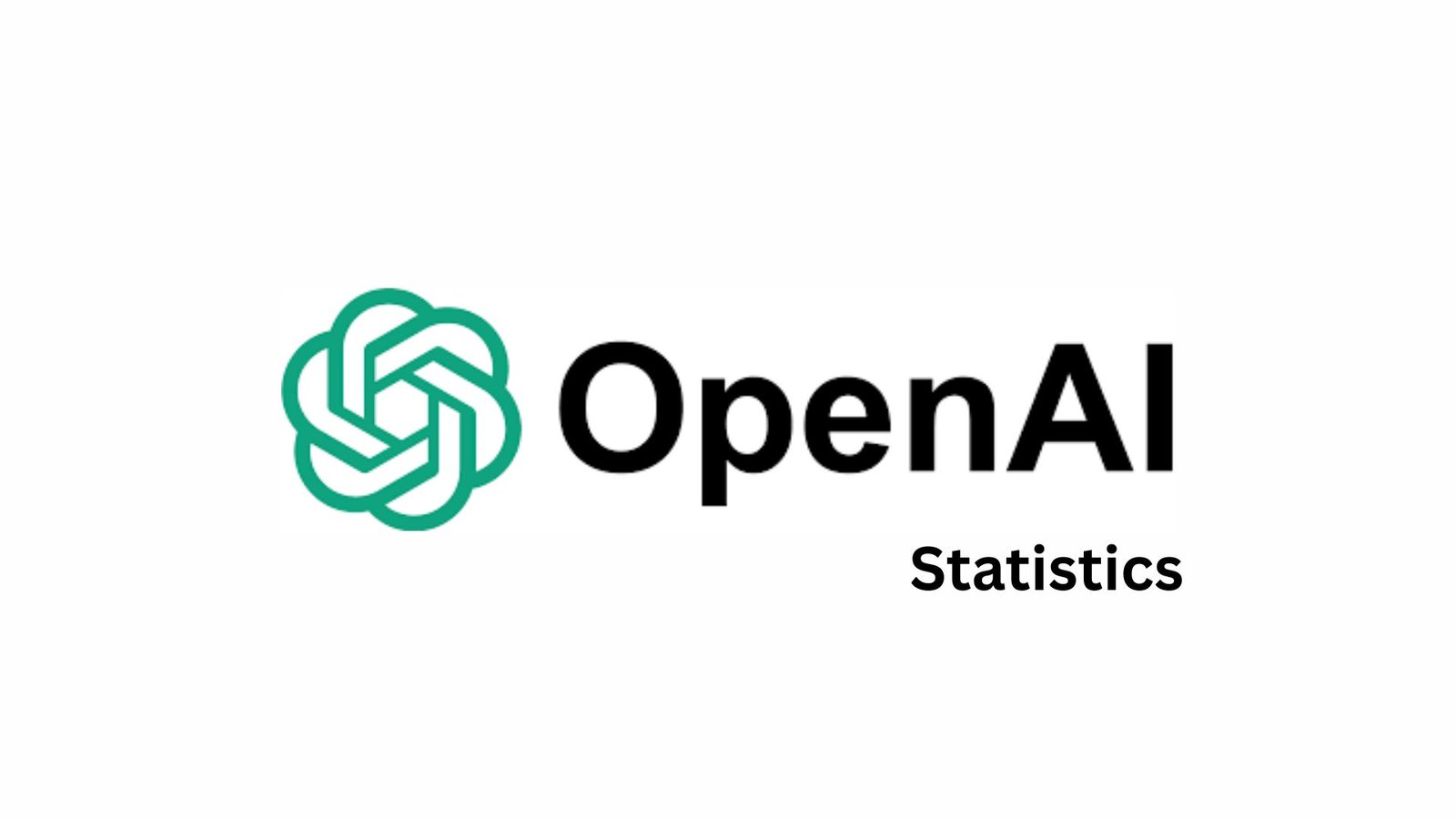Identity and Access Management Market to hit USD 54.4 Billion by 2033
Updated · Sep 26, 2025

WHAT WE HAVE ON THIS PAGE
Introduction
According to Market.us, The Global Identity and Access Management Market is projected to reach USD 54.4 billion by 2033, increasing from USD 18.3 billion in 2023, with a steady CAGR of 11.5% between 2024 and 2033. In 2023, North America dominated the market with a 38.3% share, accounting for USD 7.0 billion in revenue. This strong regional presence reflects the high adoption of advanced security solutions, driven by regulatory requirements, cloud integration, and the rising demand for robust identity protection across enterprises.
The Identity and Access Management Market covers solutions, platforms, and services that help organizations manage digital identities, authenticate users, and control access to systems, applications, and data. Core IAM components include user provisioning, single sign-on (SSO), multi-factor authentication (MFA), access governance, privilege access management (PAM), directory services, and identity orchestration. The goal is to ensure the right individuals (or systems) have the right access at the right time, and to reduce identity-based risks.

Key Takeaways
- The global Identity and Access Management market is set to grow from USD 18.3 Billion in 2023 to USD 54.4 Billion by 2033, expanding at a CAGR of 11.5%.
- North America held 38.3% of the market in 2023, equal to about USD 7.0 Billion, making it the leading region.
- The Provisioning segment led with 32.5% share, reflecting its importance in managing user identities and access.
- On-premise solutions accounted for 54.1%, as many organizations continue to prefer in-house control of IAM systems.
- Large enterprises dominated with 65.8% share, showing their stronger focus on safeguarding extensive data assets.
- The BFSI sector captured 23%, driven by the industry’s high demand for secure and compliant identity management.
Analysts’ Viewpoint
One major driver is the sharp increase in cyberattacks that exploit identity weaknesses such as compromised credentials or weak authentication. Organizations are investing in IAM to reduce the risk of data breaches and insider threats. Regulatory compliance is also a strong force: laws and standards such as GDPR, HIPAA, and industry security mandates require organizations to prove that access is properly controlled.
Another driver is digital transformation and cloud adoption: as systems move to cloud and hybrid environments, identity management must evolve to span on-premises, cloud, and hybrid applications. Work from anywhere and remote access norms further pressure secure identity solutions. Finally, the rise of connected devices, APIs, and service accounts means more “nonhuman” identities must be managed securely.
Investment and business benefits
Investment opportunities are expanding as organizations allocate larger budgets to cybersecurity and regulatory compliance. Markets in North America lead growth due to high technology adoption, strict regulations, and prevalence of cyber threats. Emerging economies in Asia-Pacific and Latin America also offer significant potential driven by rapid digitalization and government initiatives on data protection.
Investors and technology providers see increasing merger and acquisition activity as they seek to integrate AI, machine learning, and cloud-native solutions into holistic IAM platforms. Managed IAM services are creating recurring revenue streams, attracting long-term capital. Key business benefits of IAM include improved security posture through precise access management, reduced risk of data breaches, and simplified regulatory compliance through detailed access reporting and audit trails.
IAM streamlines administrative workflows, saving time by automating user provisioning, password management, and access reviews. Enhanced user experience with single sign-on and adaptive authentication also boosts productivity. Moreover, enterprises gain greater visibility and control over both internal and external identities, reducing insider threats and ensuring secure collaboration.
Role of Generative AI
Role of Generative AI in Identity and Access Management (IAM) has become a key factor driving innovation and efficiency in this space. Generative AI helps automate routine IAM tasks like access reviews, rights validation, and dynamic permission adjustments, reducing manual workloads significantly. For example, it facilitates natural language interfaces, allowing administrators to update access permissions in real time with much less friction.
This technology also supports compliance with regulatory frameworks by enabling chat-driven interaction for access requests and approvals. Statistics show organizations using AI-powered IAM have reduced inappropriate access by 43% and cut time spent on reviews by 60%, illustrating its impact on security and operational efficiency. Furthermore, AI-driven predictive access provisioning has been reported to reduce access request processing time by 83% while improving accuracy by 67%.
Emerging trends
Emerging trends in IAM for 2025 emphasize securing both human and machine identities, as machine identities are expected to outnumber human users by 3 to 1. Modern IAM solutions now focus on continuous validation, privileged access management, and automated provisioning of machine identities to counter supply chain threats and breaches.
Passwordless authentication through passkeys is gaining traction, with about 30% of consumers already using them, especially in high-risk sectors, reducing phishing risks and easing regulatory compliance. Decentralized identity systems, utilizing blockchain and decentralized identifiers, are also becoming mainstream for enhanced user control and privacy. These trends align with data showing 22% of organizations making digital identity security a top priority in 2024, up from 16% in 2022.
Growth factors
Growth factors for the IAM market include the growing number of digital identities amplified by cloud adoption, remote work, and third-party engagements. Organizations are increasingly driven by stringent data protection laws like GDPR, CCPA, and HIPAA that require sophisticated identity governance and compliance automation.
Multi-factor authentication (MFA), biometrics, and AI-driven adaptive authentication are critical components in addressing rising cybersecurity threats. IAM solutions enable enterprises to securely manage third-party and cloud service access without compromising compliance or user experience. Current data indicate the IAM market is growing at a CAGR of around 13-14%, reflecting strong demand driven by regulatory pressures and digital transformation imperatives.
Top Key Players in the Market
- Microsoft Corporation
- IBM Corporation
- Oracle Corporation
- Broadcom Inc.
- BeyondTrust Corporation
- CyberArk Software Ltd.
- Zoho Corporation
- One Identity LLC
- Thales Group
- Fortinet, Inc.
- Other Key Players
Key Market Segments
Component
- Password Management
- Multifactor Authentication
- Audit, Compliance, and Governance
- Provisioning
- Single Sign-On
- Directory Services
- Other Components
Deployment Mode
- Cloud-Based
- On-Premise
Organization Size
- Small and Medium-Sized Enterprises
- Large Enterprises
Industry Vertical
- IT & Telecommunication
- BFSI
- Manufacturing
- Healthcare
- Education
- Retail
- Other Industry Verticals
Read More – https://market.us/report/identity-and-access-management-market/
Sources

Barry loves technology and enjoys researching different tech topics in detail. He collects important statistics and facts to help others. Barry is especially interested in understanding software and writing content that shows its benefits. In his free time, he likes to try out new healthy recipes, practice yoga, meditate, or take nature walks with his child.









